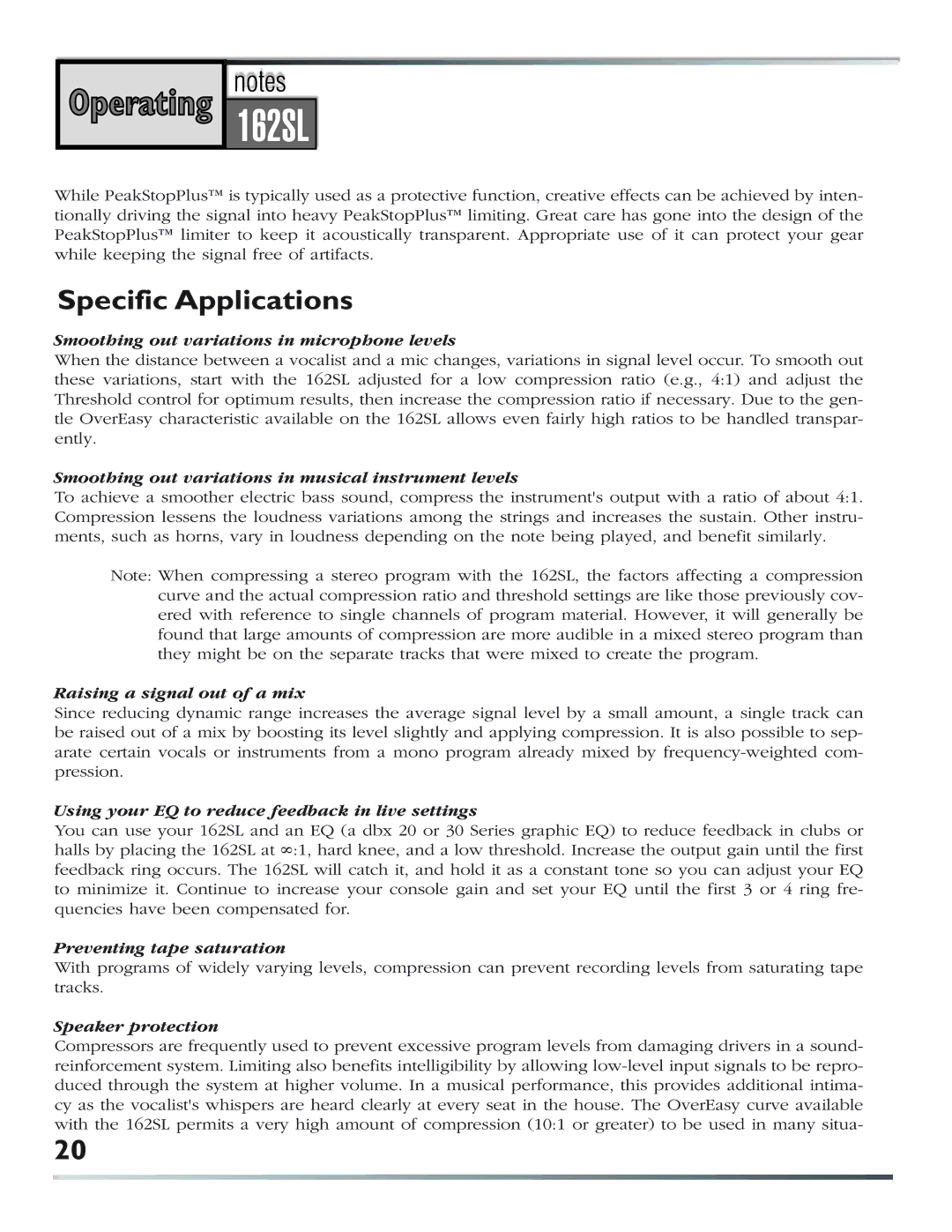
While PeakStopPlus™ is typically used as a protective function, creative effects can be achieved by inten- tionally driving the signal into heavy PeakStopPlus™ limiting. Great care has gone into the design of the PeakStopPlus™ limiter to keep it acoustically transparent. Appropriate use of it can protect your gear while keeping the signal free of artifacts.
Specific Applications
Smoothing out variations in microphone levels
When the distance between a vocalist and a mic changes, variations in signal level occur. To smooth out these variations, start with the 162SL adjusted for a low compression ratio (e.g., 4:1) and adjust the Threshold control for optimum results, then increase the compression ratio if necessary. Due to the gen- tle OverEasy characteristic available on the 162SL allows even fairly high ratios to be handled transpar- ently.
Smoothing out variations in musical instrument levels
To achieve a smoother electric bass sound, compress the instrument's output with a ratio of about 4:1. Compression lessens the loudness variations among the strings and increases the sustain. Other instru- ments, such as horns, vary in loudness depending on the note being played, and benefit similarly.
Note: When compressing a stereo program with the 162SL, the factors affecting a compression curve and the actual compression ratio and threshold settings are like those previously cov- ered with reference to single channels of program material. However, it will generally be found that large amounts of compression are more audible in a mixed stereo program than they might be on the separate tracks that were mixed to create the program.
Raising a signal out of a mix
Since reducing dynamic range increases the average signal level by a small amount, a single track can be raised out of a mix by boosting its level slightly and applying compression. It is also possible to sep- arate certain vocals or instruments from a mono program already mixed by
Using your EQ to reduce feedback in live settings
You can use your 162SL and an EQ (a dbx 20 or 30 Series graphic EQ) to reduce feedback in clubs or halls by placing the 162SL at ∞:1, hard knee, and a low threshold. Increase the output gain until the first feedback ring occurs. The 162SL will catch it, and hold it as a constant tone so you can adjust your EQ to minimize it. Continue to increase your console gain and set your EQ until the first 3 or 4 ring fre- quencies have been compensated for.
Preventing tape saturation
With programs of widely varying levels, compression can prevent recording levels from saturating tape tracks.
Speaker protection
Compressors are frequently used to prevent excessive program levels from damaging drivers in a sound- reinforcement system. Limiting also benefits intelligibility by allowing
20
